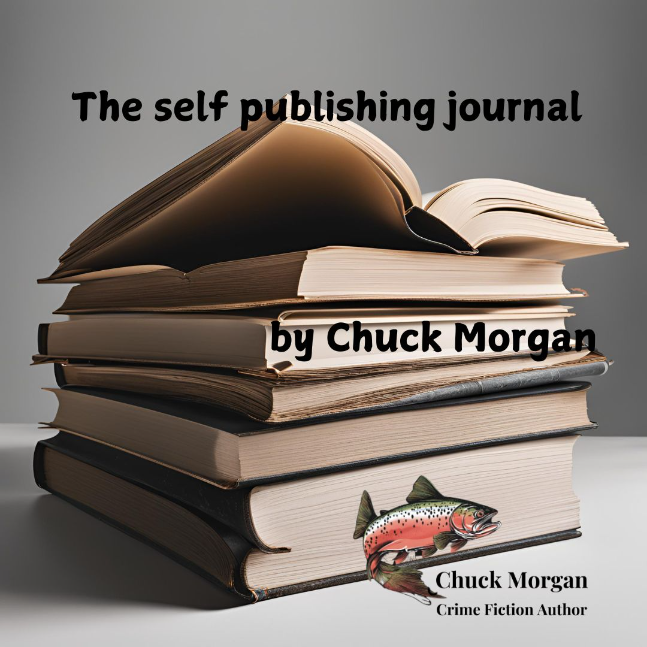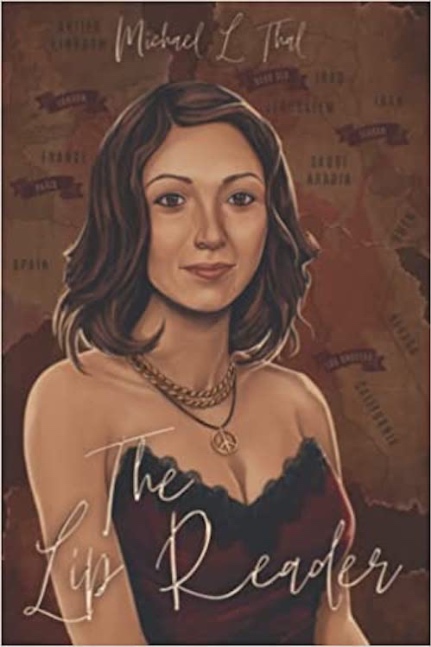- Home
- Articles
- How Important Is Research When Writing Realistic Crime Fiction?
How Important Is Research When Writing Realistic Crime Fiction?

How Important Is Research When Writing Realistic Crime Fiction?
Chuck Morgan, Crime Fiction Author
Research forms the backbone of crafting authentic and believable crime fiction, guiding your narrative in ways that resonate with readers. When you examine the intricacies of criminal behavior, legal systems, and forensic science, you enhance the credibility of your story, making it engaging and relatable. By investing time in thorough research, you not only enrich your characters and plot, but also create a sense of realism that keeps your audience hooked. Understanding the importance of research can elevate your writing, allowing you to capture the essence of the crime genre effectively.
The Role of Research in Crime Fiction
The significance of research in crime fiction cannot be overstated. It serves as the backbone for building a narrative that feels genuine and relatable. By delving deep into forensic procedures, criminal psychology, and legal protocols, you ensure your story resonates with authenticity and holds the reader's interest. When your characters encounter real-world dilemmas, their actions ring true, making for an interesting narrative. Research not only enriches your writing but also establishes your credibility as an author.
Authenticity in Character Development
Role of research in character development is fundamental to crafting believable personas. By exploring the psychological profiles and motivations of offenders, you can create multi-dimensional characters that reflect the complexities of human behavior. Understanding their backgrounds, traumas, and motivations enables you to write more authentically, allowing readers to empathize with or challenge their decisions. In doing so, you contribute to a layered narrative that goes beyond good versus evil, enhancing reader engagement.
Crafting Realistic Settings and Plots
Crafting your settings and plots requires thorough research to mirror real-life scenarios accurately. This lends credibility to your story, ensuring that readers are immersed in the world you've built. By examining real incidents, local laws, and societal nuances related to crime, your narrative feels grounded and plausible. You can incorporate authentic locations, crime scene procedures, and investigative techniques that reinforce your narrative's realism and deepen the reader's connection to the story.
Character-driven stories often hinge on the credibility of their settings and plots. Research allows you to weave genuine details into your narrative, giving a sense of place that resonates with the reader. A thorough understanding of geographic, cultural, and legal contexts not only enriches your world-building but also enhances the stakes for your characters. This depth transforms a simple backdrop into a vital element of your story arc, influencing characters' decisions and the plot's trajectory, ultimately fostering a more immersive reading experience.
Understanding Criminal Behavior
You need to grasp the complexities of criminal behavior to write interesting crime fiction. By submerging into the psychological and societal factors that drive individuals to commit crimes, you can create more authentic and relatable characters. Understanding elements such as motive, opportunity, and the impact of the environment enhances the believability of your narrative, allowing readers to immerse themselves in the story while grappling with the moral quandaries presented.
Insights from Psychology and Criminal Studies
Insights drawn from psychology and criminal studies enable you to depict characters in a realistic light. By exploring various psychological theories, like the work of Eysenck on personality traits associated with criminality or Bandura's social learning theory, you can understand the underlying mental mechanisms that inform criminal actions. Plus, theories such as routine activity theory shed light on how victims become targets, enhancing your storytelling by incorporating realistic motivations and scenarios.
The Importance of Real-world Case Studies
After examining real-world case studies, you can ground your crime fiction in reality. Case studies provide context about how certain crimes are committed, the demographics of offenders, and patterns in criminal behavior. This knowledge lets you construct narratives that resonate with authenticity and draw from actual events, enriching your writing. Consider these notable case studies:
- FBI Behavioral Analysis Unit's study on serial offenders from 1980 to 2020, revealing common traits across 600+ cases.
- Analysis of domestic violence incidents in urban areas, highlighting that 70% involve prior documented abuse.
- Reports on gang involvement in inner-city crimes showing that 85% of all narcotic-related offenses are linked to gang activity.
- Statistics from the National Institute of Justice on recidivism rates showing that 67% of released prisoners are re-arrested within three years.
Studies like these offer a wealth of data that equips you with the information to write convincingly about crime. By leveraging these real-world statistics and narratives, you can create plots that feel grounded and informed by actual events. Through such detailed examination, your characters and scenarios will reflect genuine complexities, making for an engaging and thought-provoking read.
Legal and Forensic Accuracy
Understanding the intricacies of legal and forensic elements can significantly enhance the authenticity of your crime fiction. By ensuring the legal protocols and forensic details in your narrative are accurate, you create a believable world that resonates with readers, drawing them deeper into your story and making them invest in your characters and plot. Authenticity in these areas not only upholds the integrity of your writing but also engages readers who have an interest in law and forensics.
Incorporating Legal Protocols
Along your writing journey, it's crucial to weave legal protocols seamlessly into your narrative. Familiarizing yourself with the legal system will enhance your plot's plausibility. Whether you’re tackling courtroom procedures or police investigations, understanding these protocols will lend credibility to the actions and decisions of your characters, showcasing your attention to detail and commitment to realism.
Forensic Science in Crime Writing
Among the many elements of crime fiction, forensic science plays a vital role in creating an interesting narrative. Incorporating accurate forensic techniques can elevate your story, providing crucial clues and insights that drive the plot forward. Showcasing methods such as DNA analysis, ballistics, or fingerprinting not only intrigues readers but also educates them, fostering a more immersive experience.
At the core of crime writing, forensic science serves as a key element that connects the dots in investigations. As you integrate these scientific methods into your storytelling, ensure that you research various forensic disciplines thoroughly. Understanding their applications and limitations will not only enhance realism but also allow you to create tension and intrigue around crucial plot points. This approach not only adds a layer of depth to your narrative but also aids in developing characters who rely on these scientific breakthroughs to solve crimes, making your fiction both engaging and informative.
Balancing Fact and Fiction
Your ability to balance fact and fiction is necessary for creating a realistic crime narrative. While authentic details can enhance credibility, the art of storytelling often demands embellishment. You want to captivate your audience, which sometimes means bending the rules of reality to elevate drama or suspense. This delicate balance allows you to weave an engaging story without compromising your readers’ trust in the world you've built.
Creative Liberties in Storytelling
Liberties in storytelling can fuel your creativity, enabling you to explore angles and character motivations that enrich your plot. While real-life crime may follow specific patterns and outcomes, fiction often affords you the flexibility to deviate from those norms. By using your imagination, you can create interesting scenarios that resonate with readers, proving that effective storytelling may prioritize emotional truth over factual accuracy.
Reader Expectations and Suspension of Disbelief
Any successful crime fiction hinges on the reader's willingness to suspend disbelief. Your audience comes prepared to accept some level of fictionality within the narrative, which creates an opportunity for you to push boundaries. Understanding your readers' expectations can help you craft a story that feels plausible yet entertaining. The key lies in establishing a believable framework, allowing readers to invest emotionally while still navigating the twists and turns you lay out.
At the heart of the reader's expectations lies the principle that, while they seek realism, they also crave excitement and intrigue. Your ability to build tension, weave subplots, and create interesting characters often takes precedence over strict adherence to factual accuracy. This means you can craft imaginative scenarios, as long as you anchor them within a credible setting. By artfully balancing realism and creativity, you allow readers to remain engaged without feeling alienated by implausibility, enhancing their overall reading experience.
Resources for Effective Research
Unlike other genres, crime fiction demands a level of authenticity achieved through diligent research. Using diverse resources can enhance your narrative, ensuring that every detail resonates with realism. From academic articles to expert interviews, leveraging various tools will arm you with knowledge that solidifies your plot and character development. By exploring reputable sources, you'll build a solid foundation for your crime-fueled story.
Books, Journals, and Online Databases
Across the spectrum of crime writing, an array of books and journals deciphering criminal behavior, investigative techniques, and forensic science exist. Online databases provide access to a wealth of scholarly articles and case studies that research deep into real-life crime scenarios. By immersing yourself in these resources, you will enhance your understanding and portrayal of crime in interesting ways.
Networking with Law Enforcement and Experts
An effective method to enrich your research is to network with law enforcement officials and subject matter experts. Engaging with these professionals can provide invaluable insights that elevate your storytelling, making it more authentic and relatable.
Understanding the intricacies of crime through the eyes of those who combat it daily is crucial. You can attend police ride-alongs or law enforcement workshops, allowing you to ask questions and absorb firsthand experiences. Establishing relationships with detectives, forensics experts, or even legal professionals will not only provide you with credible information but may also inspire unique plotlines that underscore the realities of crime and justice. Reach out; their lived experiences have the power to bring depth and authenticity to your writing.
Case Studies of Successful Crime Authors
To illustrate the significance of research in crime fiction, consider the following successful authors who exemplify this practice:
- Michael Connelly - Spent time with LAPD detectives, resulting in an authentic portrayal of police work in the Harry Bosch series.
- Patricia Cornwell - Conducted extensive research in forensic science, which shaped her Kay Scarpetta novels and makes them resonate with authenticity.
- John Grisham - Studied legal practices and spent time in courtrooms to create gripping courtroom dramas in novels like "A Time to Kill."
- Ian Rankin - Researched Edinburgh's history, police procedures, and local culture, which is reflected in his Inspector Rebus series.
Lessons Learned from Their Approaches
From these authors, you can gather valuable insights about integrating research into your writing process to elevate your work's credibility and depth.
The case studies reveal successful authors immerse themselves in their subjects, gaining firsthand experience and knowledge. By engaging with professionals in relevant fields, attending workshops, or using academic resources, you can significantly enhance your crime fiction. This method not only enriches your narrative but also helps you create believable characters and scenarios that resonate with your audience. The emphasis on research ensures that your storytelling remains anchored in reality while allowing for creative expression.
To wrap up
So, understanding the significance of research in writing realistic crime fiction cannot be overstated. You need accurate details to create authentic settings, believable characters, and intriguing plots that resonate with readers. By investing time into researching police procedures, forensic science, and psychological profiles, you enhance your storytelling and build credibility. Thorough research not only elevates your narrative but also engages your audience, making your crime fiction both interesting and trustworthy.
https://chuckmorganbooks.com







